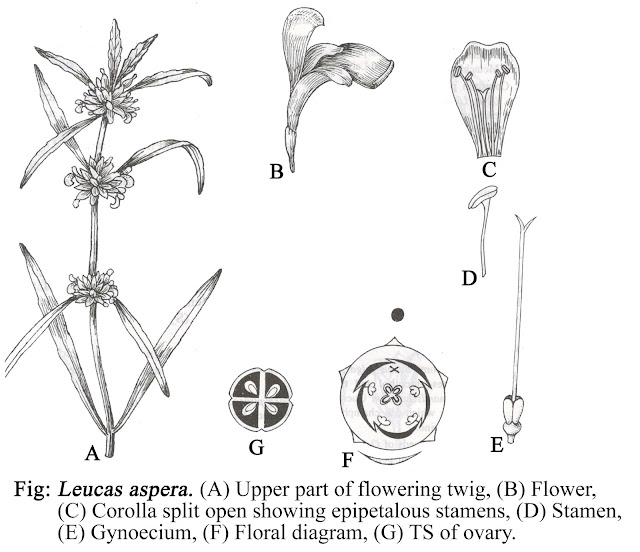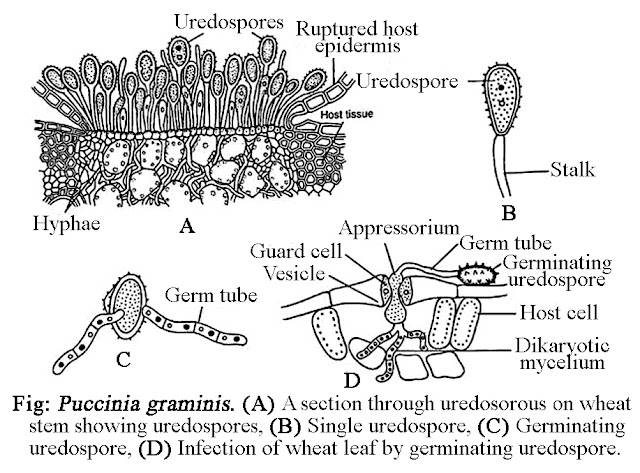LAMIACEAE
1. SYSTEMATIC POSITION:
Bentham
& Hooker
Division: Phanerogames (Seed Plants)
Class:
Dicotyledones
Sub-class: Gamopetalae
Series:
Bicarpellatae
Order: Lamiales
Family: Lamiaceae
2. MORPHOLOGICAL
CHARACTERS:
Habit
– Herbs or shrubs, often aromatic with quadrangular stem.
Leaves
– Opposite or whorled, simple, aromatic, exstipulate, hairy.
Inflorescence
– Verticillaster or fascicles of axillary cymes or dense spikes.
Flower
– Bisexual, zygomorphic, hypogynous, often bilabiate.
Calyx
– Sepals 5, united, persistent.
Corolla
– Petals 5, united, bilabiate, imbricate.
Androecium
– Stamens 4, epipetalous, didynamous or 2.
Gynoecium
– Carpel 2, syncarpous, ovary 4-lobed, superior, 4-locular, ovule 1 in each
loculus, placentation axile, style gynobasic, stigma bifid.
Fruit
– Schizocarpic carcerule, rarely drupe.
4.
COMPARATIVE
SYSTEMATIC POSITION AND AFFINITIES:
Majority of the
taxonomists including Bentham & Hooker, Hutchinson, Cronquist, Takhtajan,
etc. have placed this family under the order Lamiales.
The
family Lamiaceae is considered closely allied to the Verbanaceae. The family
also resembles with Boraginaceae in fruit characters but the position of the
radicle sharply distinguishes them. In some minor characters the family also
shows affinities with the Scrophulariaceae. The resemblance with Acanthaceae of
Lamiaceae is largely superficial.
5.
ECONOMIC
IMPORTANCE:
1. The members of family Lamiaceae are important as
the source of aromatic oils which are extensively used in various perfumes,
flavor and pharmaceutical industries. The essential oil yielding plants are – Ocimum sanctum, O. basilicum, O. virdi, O.
gratissimum, O.canum, Mentha ravens, M. piperitia, M. spicata, Salvia
officinalis, Lavendula spp., Elsholtzia spp., Hyptis suaveolens, etc.
2. Some members are cultivated as
ornamental plants. Ornamental species of the family are – Coleus aromaticus, C. blumi, etc.
3. Others have medicinal values.
These are – Leucas aspera, Leonarus
sibiricus, Cannabis sativa, etc.
*************




Comments
Post a Comment